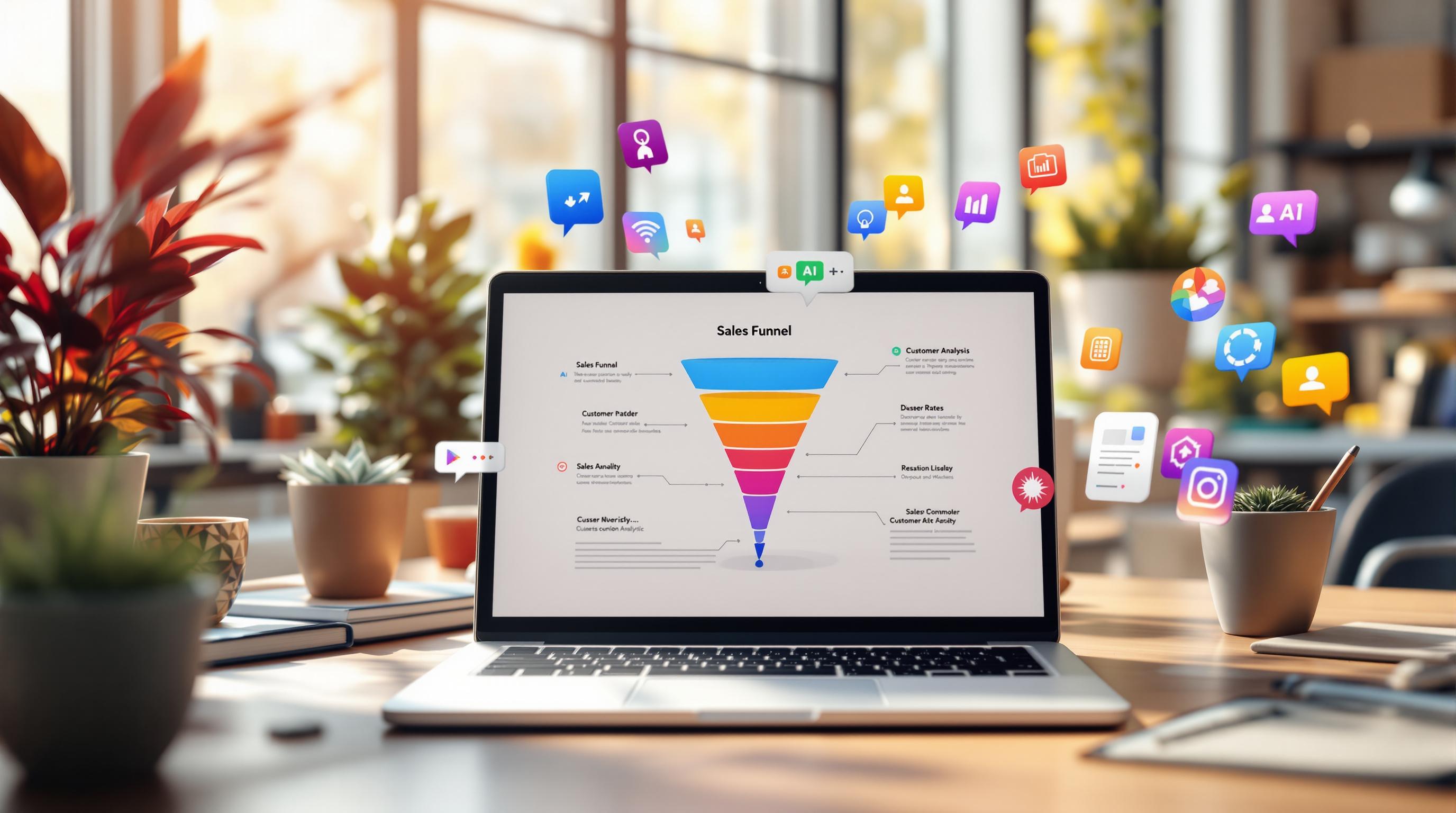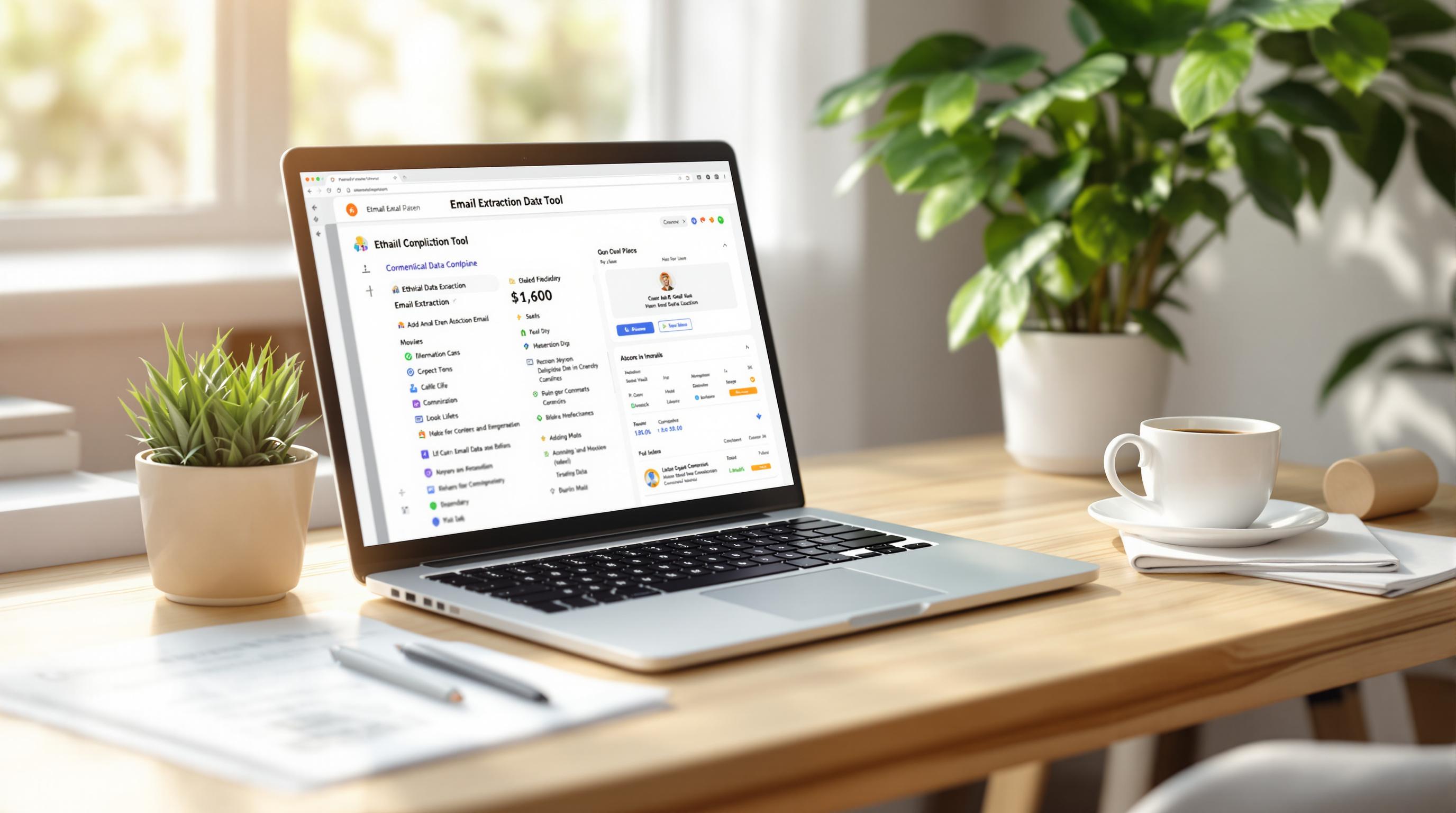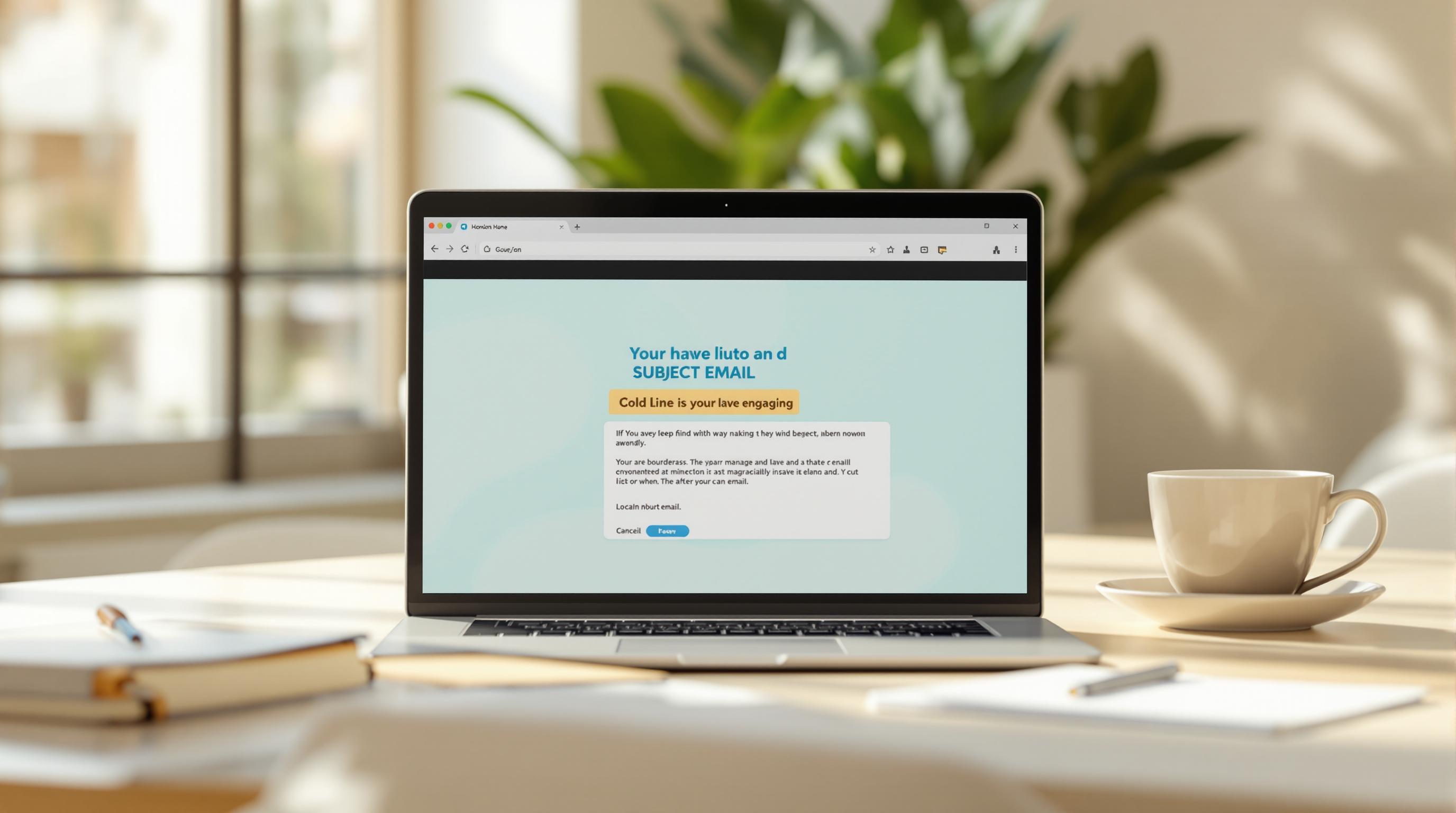Email verification ensures your marketing emails reach real, active recipients. It cleans your email list by identifying invalid addresses, typos, spam traps, and inactive domains, helping you avoid wasted effort and maintain a strong sender reputation. This process reduces bounce rates, improves deliverability, and increases engagement, leading to better campaign performance and ROI.
Key Benefits of Email Verification:
- Lower Bounce Rates: Reduces hard bounces from up to 20% to less than 2%.
- Improved Deliverability: Verified lists achieve 95-98% delivery rates.
- Protects Reputation: Prevents spam filters from flagging your emails.
- Boosts Engagement: Focuses on reaching active, interested recipients.
How It Works:
- Syntax Check: Spots formatting errors.
- Domain Verification: Confirms the domain exists and is active.
- Mailbox Validation: Ensures the inbox can receive emails.
Steps to Start:
- Clean your current list with tools like Emailable or Bouncify.
- Use real-time verification during sign-ups with APIs from ZeroBounce or NeverBounce.
- Schedule regular monthly checks to keep your list updated.
Investing in email verification tools not only improves campaign results but also protects your long-term email marketing strategy.
Related video from YouTube
What is Email Verification?
Every year, about 22.5% of email addresses become invalid, and an extra 2% go inactive each month. This makes email verification a must for successful marketing campaigns. In simple terms, email verification is the process of checking email addresses to confirm they're active and able to receive messages. Research shows that 20% of registered emails have issues, from typos to outright invalid addresses.
What Does Email Verification Do?
Email verification helps clean up your email list by checking each address for accuracy. It spots common problems like misspellings, fake accounts, and outdated addresses that could hurt your campaign's performance. Studies show that verifying your email list can boost your campaign's ROI by ensuring your messages reach real, engaged recipients. To do this, email verification tools use a mix of techniques, often offering different levels of validation to meet specific needs.
"Email verification is key to maintaining a good sender reputation, consequently avoiding the spam folder, thus maximizing email deliverability." - Emailable
Types of Email Verification Methods
Modern email verification uses several techniques to thoroughly validate addresses:
| Verification Method | Purpose | What It Checks |
|---|---|---|
| Syntax Validation | Checks for proper formatting | Basic email structure |
| Domain Verification | Confirms the domain exists | DNS and MX records |
| Mailbox Verification | Verifies the inbox works | SMTP connection, catch-all status |
Each method plays an important role. Syntax validation catches formatting mistakes, domain verification ensures the email server exists, and mailbox verification confirms whether a specific address can actually receive emails. By regularly verifying your email list, you can improve the effectiveness of your email campaigns and keep your list clean and reliable.
How Email Verification Improves Campaigns
Email verification plays a key role in improving email marketing performance, helping businesses connect with their audience more effectively and reliably.
Lower Bounce Rates and Improved Deliverability
Using a verified email list significantly reduces bounce rates and ensures your emails are delivered to the right inboxes. By identifying inactive or invalid addresses, email verification tools help maintain a clean and accurate list. These tools use real-time checks and batch processes to keep your list in top shape.
| Metric | Unverified List | Verified List |
|---|---|---|
| Hard Bounces | Up to 20% | Less than 2% |
| Delivery Rate | 75-80% | 95-98% |
| Invalid Addresses | 22.5% annually | Under 1% |
Protecting Your Sender Reputation
Reducing bounces isn't just about better metrics; it also protects your sender reputation. A strong reputation means your emails are less likely to be flagged by spam filters, keeping your messages in the inbox where they belong. Regular verification helps avoid the pitfalls that can damage your ability to reach your audience.
Boosting Engagement and Campaign Success
When your email list is verified, you're focusing your efforts on active, engaged recipients. This leads to higher open rates, stronger click-through rates, and better overall campaign performance. By targeting only valid and interested contacts, you maximize your impact while minimizing wasted effort.
sbb-itb-8abf799
Steps to Start Using Email Verification
Clean Up Your Current Email List
Start by reviewing your existing email database to weed out invalid addresses, spam traps, and temporary emails. Tools like Bouncify or Emailable can help you scan and clean your list effectively.
Here’s a quick breakdown of how this process works:
| Verification Step | Purpose | Impact |
|---|---|---|
| Remove Hard Bounces | Get rid of permanently invalid emails | Cuts bounce rate by up to 18% |
| Check Syntax | Spot formatting errors | Identifies up to 7% of problematic emails |
| Domain Validation | Confirm domain activity and validity | Filters out up to 12% of invalid addresses |
Verify Emails in Real Time
Using real-time verification during sign-ups can stop invalid emails from ever being added to your list. API integrations from platforms like ZeroBounce or NeverBounce make this possible by instantly validating each address as it’s entered. This keeps your list clean and ensures you’re only collecting valid contacts.
Schedule Regular Email List Checks
To stay ahead of issues, schedule monthly checks to catch and remove emails that have become invalid. Many verification tools offer automation features, allowing you to set up workflows that flag and eliminate suspicious or problematic addresses without manual effort.
"Regular verification is crucial for maintaining email list health. With 22.5% of email addresses turning invalid yearly, consistent checks can prevent deliverability issues and protect your sender reputation", says Webbula, a trusted email verification service provider.
When implementing these practices, start with the most active segments of your list. Gradually expand to include all contacts. This step-by-step approach ensures your list remains healthy while keeping your most engaged subscribers at the forefront.
Once your list is clean and you’ve set up regular verification processes, the next move is choosing the right tools to keep things running smoothly.
Picking the Right Email Verification Tool
Once you’ve established a routine for verifying your email list, the next step is finding the right tool to keep things accurate and efficient. Not all tools are the same, and choosing wisely can make a big difference in your email deliverability and campaign success.
What to Look For in an Email Verification Tool
When comparing email verification tools, focus on features that directly improve your email deliverability and save time. Below is a breakdown of key features to keep in mind:
| Feature | Purpose | How It Helps Your Campaigns |
|---|---|---|
| Real-time Verification | Checks emails as users sign up | Stops invalid addresses from entering your list |
| Batch Processing | Cleans large lists all at once | Saves hours when updating existing databases |
| API Integration | Links with marketing platforms | Simplifies the verification process within your workflow |
Providers like ZeroBounce offer platforms packed with these features. For example, they provide 100 free verifications each month, with paid plans starting at $16 for 2,000 verifications.
When picking a tool, think about your email volume, whether you need integrations, your budget, and the type of verification you require. Tools that offer both single email checks and bulk verification options tend to be the most versatile.
Email Extractor Tool - AI-Powered Email Collection

The Email Extractor Tool leverages AI to simplify the process of gathering contact information, making it easier and quicker to build your list. This Chrome extension allows you to extract emails effortlessly, with plans starting at $8.99/month for up to 5,000 email addresses. But don’t forget - gathering emails is just the first step. You’ll still need to verify them to ensure your list stays clean and effective.
Using the right tools not only keeps your email list in top shape but also lets you see how verification can directly boost your campaign results.
Tracking the Results of Email Verification
Keeping an eye on your results after using email verification helps you see how well it’s working and lets you fine-tune your approach.
Compare Results Before and After
To understand the impact of email verification, start by setting a baseline for your metrics. Then, track how things change over time. Break this process into three key stages:
- Before Verification: Spend at least a month tracking your current metrics. Record details like bounce rates, deliverability percentages, and engagement levels to establish your starting point.
- Implementation Phase: During the first month of using verification, look for early improvements. Many businesses notice a sharp drop in bounce rates after their first verified campaigns.
- Post-Verification Phase: Over the next 3-6 months, keep an eye on long-term trends. Watch for sustained improvements in bounce rates, inbox placement, engagement, and sender reputation.
Metrics to Watch
To gauge the success of your email verification efforts, focus on these key metrics:
| Metric | Industry Standard | Why It Matters |
|---|---|---|
| Bounce Rate | Under 2% | High bounce rates can harm your sender reputation. |
| Invalid Addresses | Up to 22.5% annually | Highlights how quickly your list quality can decline. |
Check these metrics regularly - monthly is a good rule of thumb - to ensure your email list stays in top shape. Pay special attention to hard bounces. For instance, if your bounce rate drops, it’s a sign your list is cleaner. Likewise, steady engagement growth shows better targeting and more effective campaigns.
Conclusion: Use Email Verification to Improve Campaigns
Email verification is a key step for running successful email campaigns. It's not just about tidying up your email lists - it’s about ensuring your messages actually reach the right audience.
Using email verification can lead to better deliverability, higher engagement rates, a stronger sender reputation, and improved campaign outcomes. By keeping your email lists clean, you can concentrate on connecting with subscribers who are genuinely interested, while also making the most of your marketing resources.
"Email verification protects your sender reputation and ensures your messages reach engaged, interested recipients."
To get the most out of email verification, follow a simple approach: clean your list, use real-time verification tools, and schedule regular check-ups. This helps maintain your list quality and ensures your email campaigns stay effective over time.
Keep in mind, email verification isn’t a one-and-done task. Making it a regular part of your email strategy will lead to better deliverability, stronger engagement, and higher success rates for your campaigns. By prioritizing this step, you’ll not only improve your current results but also set a solid foundation for future email marketing success.



